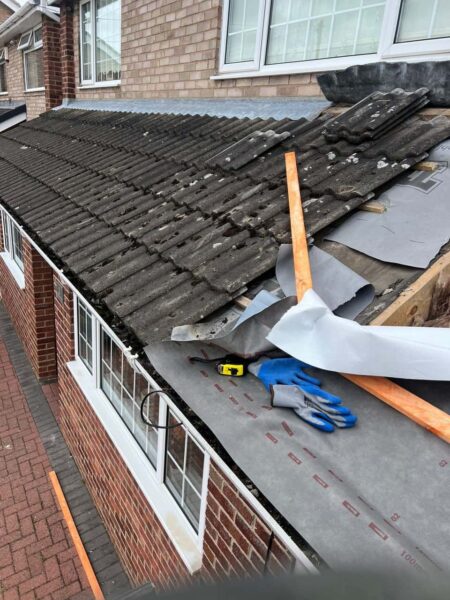Navigating Flat Roof Drainage: Understanding the Impact of Roof Slope
Introduction: Flat roofs are a popular choice for modern buildings, offering versatility in design and functionality. However, one critical aspect that often requires careful consideration is drainage. Proper drainage is essential for flat roofs to prevent water pooling, leaks, and structural damage. The roof’s slope plays a significant role in determining how effectively water is drained away. At CGT Roofing Newport Pagnell, we understand the importance of flat roof drainage and the impact of roof slopes on its effectiveness. In this blog post, we’ll explore the relationship between roof slope and drainage, offering insights to help property owners make informed decisions about their roofing needs.
The Role of Roof Slope in Drainage:
Contrary to its name, flat roofs are not entirely flat but have a slight slope or pitch to facilitate water drainage. The slope of a flat roof is typically minimal, ranging from 1/4 inch to 1/2 inch per foot. While this slope may seem insignificant, it is crucial for directing water towards drains or scuppers and preventing ponding on the roof surface.
Impact of Roof Slope on Drainage Efficiency:
- Water Flow: The roof’s slope determines the direction and speed of water flow. A steeper slope allows water to drain more quickly, reducing the risk of ponding and water damage. Conversely, a flatter slope may result in slower drainage and increased susceptibility to water pooling.
- Ponding Risk: Insufficient roof slope can lead to water ponding, where water accumulates in low-lying areas of the roof surface. Ponding water can accelerate roof deterioration, promote algae and fungal growth, and compromise the integrity of roofing materials.
- Drainage System Design: The roof slope influences the design and placement of drainage components, such as internal drains, scuppers, and gutters. Properly sizing and positioning drainage outlets is essential for effective water removal and preventing backups or overflows.
- Maintenance Requirements: Roof slopes can impact flat roof maintenance requirements. Steeper slopes may require less frequent cleaning and maintenance to ensure unobstructed water flow, while flatter slopes may necessitate more frequent inspections and debris removal to prevent drainage issues.
Considerations for Roof Slope Design:
When designing flat roofs, several factors should be considered to optimise drainage efficiency:
- Building Codes and Regulations: Local building codes often specify minimum slope requirements for flat roofs to ensure adequate drainage and structural integrity. Compliance with these regulations is essential to avoid potential liabilities and ensure the longevity of the roof system.
- Roofing Materials: The choice of roofing materials can influence the design of roof slopes and drainage systems. Some materials, such as single-ply membranes and metal roofing, are better suited to low-slope applications and can effectively accommodate minimal roof slopes.
- Professional Expertise: Consulting with roofing professionals, such as CGT Roofing Newport Pagnell, is crucial for assessing site-specific factors, evaluating drainage needs, and designing customised solutions tailored to the unique characteristics of the building and environment.
Conclusion: Understanding the impact of roof slope on flat roof drainage is essential for ensuring roofing systems’ long-term performance and durability. Experts specialise in providing comprehensive roofing services, including designing, installing, and maintaining flat roofs with optimised drainage solutions. Learn more about our roofing solutions and how experts can assist you with your flat roof drainage needs.
Call us on: 01908 030 895
Click here to find out more about CGT Roofing Newport Pagnell
Click here to complete our contact form and see how we can help with your roofing needs.

